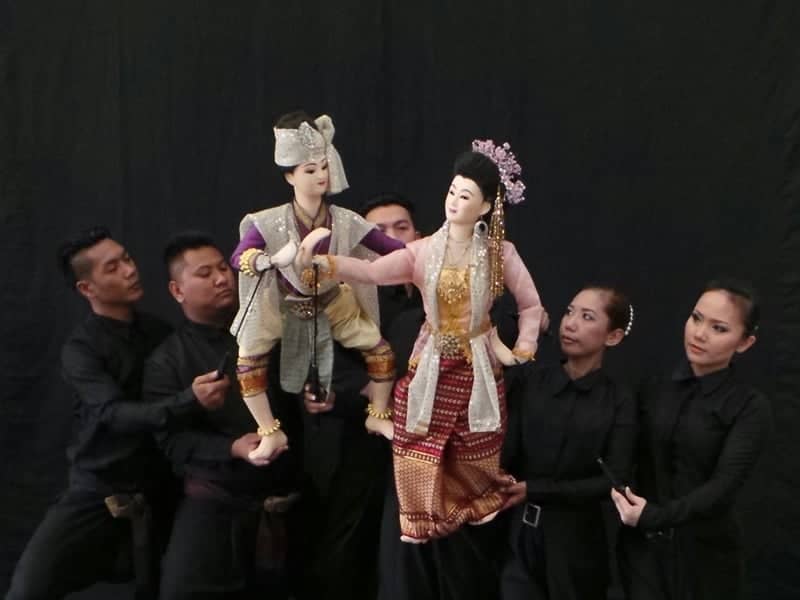Did you know that Thailand has a vibrant and fascinating puppetry tradition? If you’re intrigued by the idea of puppets and the stories they tell, then you’re in for a treat. In this article, we’re going to take a closer look at the rich history of Thailand’s puppetry tradition and dive into the details that make it so unique. So, get ready to discover the world of Thai puppets and the enchanting tales they bring to life.
Thailand’s puppetry tradition dates back centuries, with its roots in ancient Thai folklore and mythology. The art of puppetry in Thailand is known as “Nang Yai” or “Nang Talung,” and it has been a cherished form of entertainment for generations. These puppets are intricately crafted and manipulated by skillful puppeteers, who bring them to life on a shadow screen or a puppet stage. Each puppet is a work of art in itself, with vibrant costumes, detailed facial expressions, and elaborate movements.
In this article, we’ll explore the different types of Thai puppets, such as the shadow puppets or the traditional string puppets. We’ll delve into the stories and themes depicted in these performances, which often revolve around ancient legends, epic battles, and moral lessons. You’ll learn about the techniques used by puppeteers to manipulate the puppets and bring them to life, as well as the significance of music, lighting, and stage design in creating a truly immersive experience.
So, whether you’re a puppetry enthusiast or simply curious about Thailand’s cultural heritage, this article will provide you with a fascinating glimpse into the rich history of Thailand’s puppetry tradition. Buckle up and get ready to embark on a journey filled with myths, legends, and the art of storytelling through the enchanting medium of puppets. Get ready to be captivated by the beauty and intricacy of Thai puppetry as we dive into its world! Thailand is known for its rich cultural heritage, and one fascinating aspect of this heritage is its ancient tradition of puppetry. Dating back thousands of years, Thai puppetry has evolved into a captivating art form that continues to enchant audiences today. From its ancient beginnings to its influence on contemporary theatre, let’s delve into the origins, types, techniques, significance, and impact of Thailand’s puppetry tradition.
Ancient Beginnings
Thai puppetry has its roots in ancient rituals and performances. The earliest recorded mention of puppetry in Thailand can be traced back to the Ayutthaya Kingdom, which thrived from the 14th to the 18th century. During this time, puppetry was primarily used as part of religious ceremonies, offering entertainment and serving as a way to communicate with gods and ancestors.
Influence of Indian Puppetry
Like many other aspects of Thai culture, puppetry was heavily influenced by Indian traditions. Indian puppetry, particularly the shadow puppetry of the Ramayana epic, had made its way to Southeast Asia through trade and cultural exchanges. Thai puppetry borrowed elements from Indian puppetry, adapting them to suit local tastes and styles.
Role of Shadow Puppetry
Shadow puppetry, known as Nang Yai, played a significant role in Thai puppetry. This form of puppetry involves intricate cut-out figures made from cowhide or buffalo hide, manipulated behind a white screen with carefully placed lights casting their shadows. Nang Yai performances showcased scenes from the Ramayana and other mythological stories, conveying moral lessons and entertaining audiences at the same time.
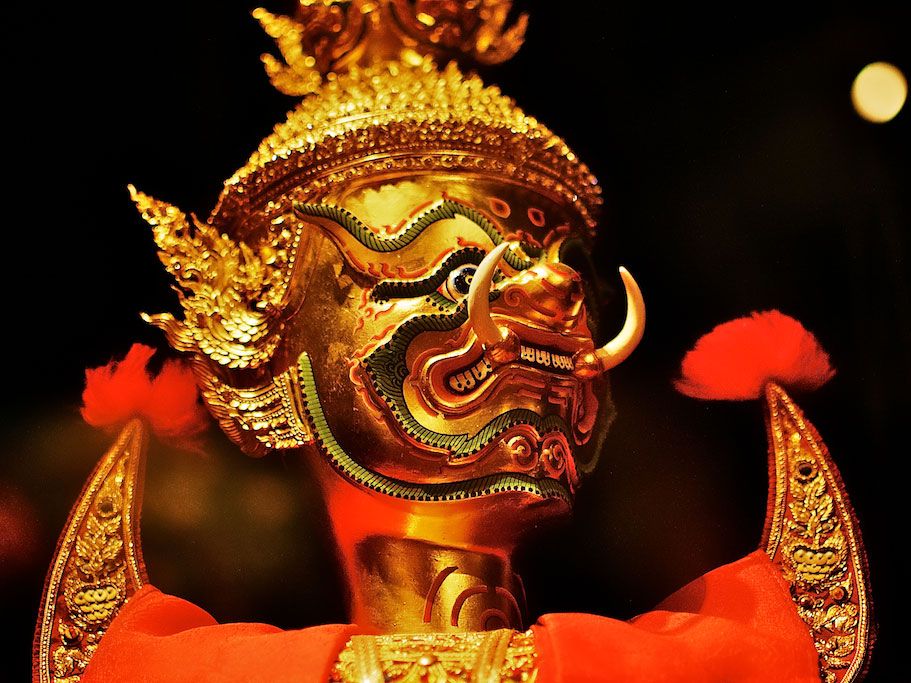
Types of Thai Puppets
Thai puppetry encompasses several types, each with its unique characteristics and features. Here are three prominent types:
Khon
Khon is a form of masked dance-drama that incorporates puppetry. Elaborate masks are worn by the performers, and their movements are accompanied by a storyteller and an ensemble of traditional Thai instruments. Khon puppetry tells stories from the Ramakien, Thailand’s version of the Indian epic, the Ramayana.
Hun Krabok
Hun Krabok focuses on puppetry using wooden rods. These rods control the movements of puppets made from carved and painted wood. Hun Krabok performances often depict humorous and satirical stories, involving characters that represent societal elements and current events.
Nang Talung
Nang Talung is a traditional form of shadow puppetry. It involves intricately cut puppets made from buffalo hide, which are held up against a backlit screen, creating mesmerizing shadow play. Nang Talung performances showcase stories from local folklore, legends, and daily life, accompanied by folk music and narration.
Traditional Techniques and Materials
The creation of Thai puppets involves meticulous craftsmanship and the use of traditional materials. Here are some of the techniques and materials employed in puppet making:
Carving and Sculpting
Thai puppet makers skillfully carve and sculpt puppets from various types of wood, such as jackfruit, teak, and sandalwood. The process requires precision and attention to detail, as the puppets need to be carved to the exact specifications of the characters they represent.
Painting and Decoration
Once the puppets are carved, they are intricately painted using vibrant colors and delicate brushwork. The puppets’ faces are detailed with expressive features, while their costumes are adorned with elaborate designs and patterns, reflecting the specific character they portray.
Use of Traditional Fabrics
Thai puppets are often dressed in exquisite traditional fabrics, such as silk or brocade. These fabrics are meticulously selected and stitched to create intricately designed costumes that enhance the characters’ appearance and reflect their status or role in the story.

Significance and Symbolism
Thai puppetry holds significant religious and cultural importance in Thai society. It serves as a medium to convey moral lessons, preserve cultural heritage, and entertain audiences. The puppets themselves are rich in symbolism, representing various aspects of Thai mythology, history, and spirituality.
Religious and Cultural Importance
Puppetry in Thailand is deeply connected to religious practices and beliefs. It is often performed during religious festivals and ceremonies, acting as a means to pay homage to deities and ancestors. The performances also serve as a form of cultural expression, highlighting Thai traditions and values.
Representing Good and Evil
Thai puppetry often embodies the eternal struggle between good and evil. Characters representing virtuous heroes, gods, and celestial beings contrast with malevolent demons and villains. The performances aim to emphasize the triumph of good over evil and convey important moral lessons to the audience.
Mythological and Historical References
Puppetry in Thailand draws heavily from mythology and historical events. The stories portrayed in puppet performances often feature legendary heroes, mythical creatures, and tales from Thai folklore. These narratives provide a connection to the country’s past and allow audiences to experience the rich tapestry of Thai culture and heritage.
The Role of Puppeteers
Puppeteers play a vital role in bringing Thai puppetry to life. They are masters of manipulation, skilled in the art of puppet movement and expression. Let’s explore the training and apprenticeship processes that puppeteers undergo, as well as the passion they bring to their performances.
Masters of Manipulation
Puppeteers dedicate themselves to mastering the art of puppet manipulation. They learn to control the puppets’ movements, gestures, and expressions, honing their skills to create a truly mesmerizing performance. The puppeteer’s ability to breathe life into the puppet is what captivates the audience and allows the story to unfold.
Training and Apprenticeship
Becoming a skilled puppeteer requires years of training and apprenticeship under a master. Apprentices learn not only the technical aspects of puppet manipulation but also the traditions, symbolism, and storytelling techniques that make Thai puppetry unique. The passing down of knowledge and skills from one generation to the next ensures the continuity and preservation of this ancient art form.
Performing with Passion
Puppeteers are driven by their passion for puppetry. They invest countless hours in preparing for each performance, meticulously planning each movement and detail. Their dedication is evident in the way they bring the puppets to life, infusing them with emotion and captivating the audience with their artistry and skill.
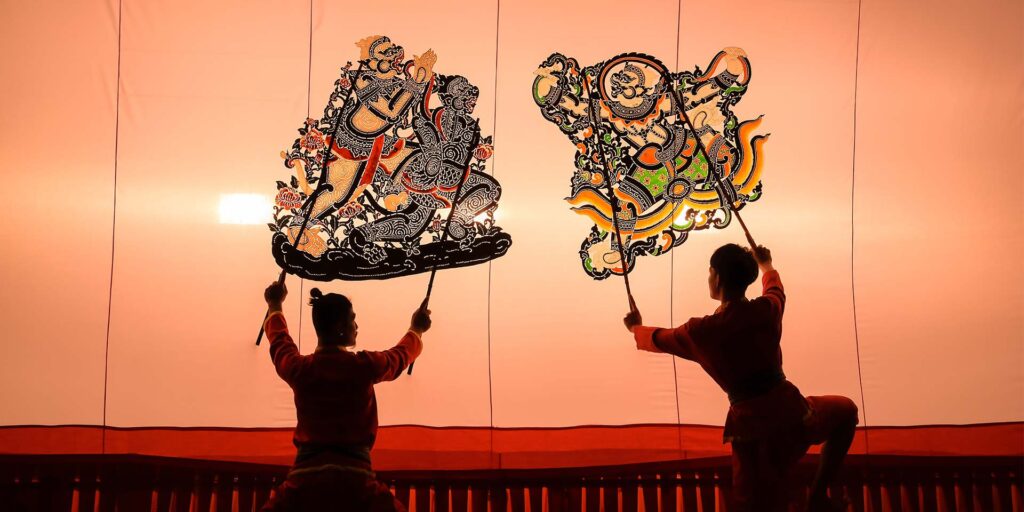
Famous Thai Puppetry Performances
Thai puppetry has given rise to numerous renowned performances throughout history. Here are three notable examples:
Ramakien (Thai Ramayana)
The Ramakien is an epic retelling of the Ramayana, the famous Indian epic. This Thai version, performed through various art forms, including Khon puppetry, showcases the heroic exploits of Rama, the brave prince, in his quest to rescue his beloved wife, Sita, from the clutches of the demon king, Ravana. The Ramakien is considered a masterpiece of Thai puppetry and continues to be performed and celebrated to this day.
The Last Puppet Master
“The Last Puppet Master” is a contemporary play that highlights the struggles faced by traditional puppeteers in the modern world. The story revolves around a master puppeteer and his apprentice, as they strive to keep the art form alive in a rapidly changing society. This thought-provoking performance merges traditional puppetry with modern storytelling techniques, shedding light on the challenges faced by the puppetry community.
The Golden Swan
“The Golden Swan” is a visually stunning puppetry performance that narrates the legend of Lord Indra and the mythical swan that he transforms into. This mesmerizing production combines shadow puppetry, live music, and intricate puppet movements to create a captivating storytelling experience. “The Golden Swan” showcases the versatility and artistry of Thai puppetry, captivating audiences with its beauty and grace.
Revitalization Efforts and Contemporary Adaptations
As Thailand embraces modernity, efforts have been made to preserve and revitalize traditional puppetry. Here are some initiatives aimed at ensuring the continued existence and evolution of this ancient art form:
Preserving Traditional Puppetry
Numerous organizations and institutions in Thailand are dedicated to preserving and promoting traditional puppetry. They conduct workshops, training programs, and exhibitions to raise awareness and educate the public about the art form’s historical and cultural significance. These efforts not only help preserve traditional techniques but also inspire new generations to appreciate and embrace Thai puppetry.
Modern Fusion Performances
Contemporary artists are exploring innovative ways to blend traditional puppetry with modern theatrical techniques. By incorporating multimedia elements, music, dance, and storytelling, these fusion performances give Thai puppetry a fresh and dynamic appeal, attracting new audiences and ensuring its relevance in today’s world.
Educational Initiatives
Thai puppetry has become an integral part of educational initiatives in schools and universities. Students are given opportunities to learn about the art form, its history, and its techniques. By including puppetry in the curriculum, educational institutions contribute to the preservation and promotion of Thai culture while fostering creativity and artistic expression among students.
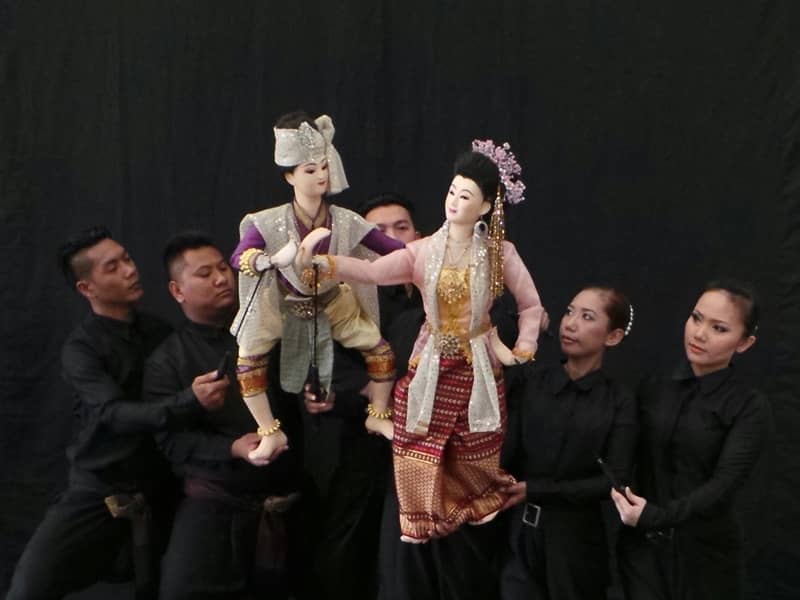
International Recognition and Influences
The unique cultural value of Thai puppetry has been acknowledged on the international stage. Here are some instances of recognition and the influence Thai puppetry has had beyond its borders:
UNESCO Intangible Cultural Heritage List
Thai puppetry was inscribed on the UNESCO Intangible Cultural Heritage List in recognition of its outstanding significance and the need to preserve its traditional practices. This acknowledgment helps raise global awareness about Thai puppetry and encourages efforts to safeguard its legacy for future generations.
Cross-Cultural Collaboration
Thai puppetry has inspired collaboration and cultural exchanges between Thailand and other countries. Artists from different parts of the world have been drawn to Thai puppetry, incorporating its techniques and aesthetics into their own work. This cross-cultural fusion breathes new life into Thai puppetry, allowing it to evolve and grow while maintaining its core traditions.
Influence on Contemporary Theatre
Thai puppetry has had a significant impact on contemporary theatre in Southeast Asia and beyond. The use of puppetry as a storytelling technique, the incorporation of traditional music and dance, and the blend of cultural heritage with modern themes can be seen in productions worldwide. The influence of Thai puppetry on contemporary theatre highlights its enduring appeal and artistic innovation.
Tourism and Economic Impact
Thai puppetry has also played a vital role in tourism and the country’s economy. Let’s explore the aspects that contribute to its popularity and economic significance:
Promoting Thai Puppetry
Thai puppetry performances attract tourists from around the world, who are captivated by the artistry and cultural significance of the shows. Tourism initiatives often include puppetry as part of cultural tours and presentations, exposing visitors to one of Thailand’s most treasured art forms and generating interest in puppetry-related activities.
Tourist Attractions
Puppetry troupes and organizations have established permanent venues and theaters, showcasing regular performances to both locals and tourists. These attractions not only provide entertainment but also offer insights into the fascinating history and traditions of Thai puppetry. They contribute to the local economy by creating jobs and generating revenue through ticket sales and merchandise.
Handicrafts and Souvenirs
The intricate craftsmanship involved in puppet making has given rise to a thriving handicraft industry. Traditional puppets, as well as smaller replicas and souvenirs, are sold in markets and souvenir shops, providing tourists with an opportunity to take a piece of Thai puppetry home with them. The sale of these handcrafted items contributes to the economic sustainability of the puppetry community.
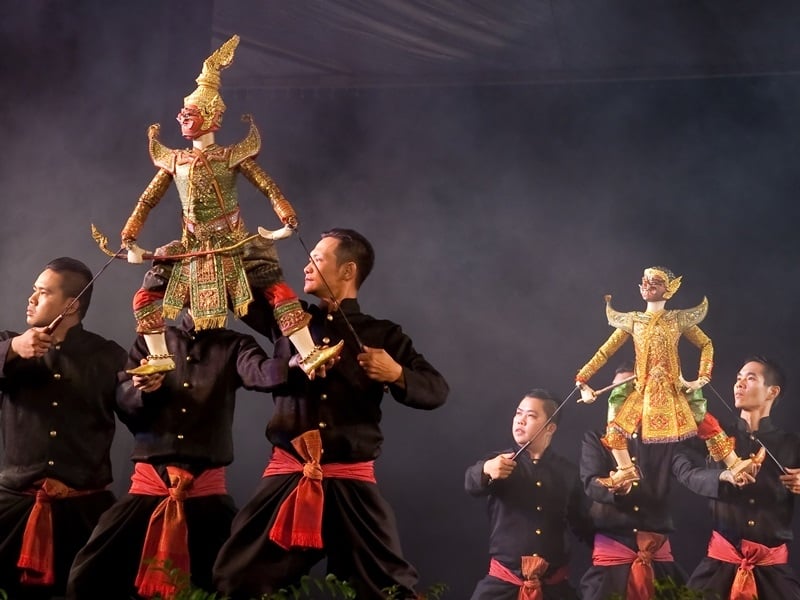
Conclusion
Thailand’s puppetry tradition is a testament to the country’s rich cultural heritage and artistic prowess. From its ancient roots to its influence on contemporary theatre, Thai puppetry continues to captivate audiences with its mesmerizing performances, intricate craftsmanship, and deep-rooted cultural significance. By preserving and promoting this ancient art form, Thailand ensures that the magic of puppetry will endure for generations to come. So, the next time you find yourself in Thailand, be sure to immerse yourself in the captivating world of Thai puppetry and discover the magic that lies within.
